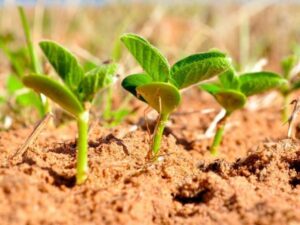Despite challenging weather conditions earlier this season, Iowa farmers have made significant advances in crop planting across the state. Recent data from the USDA shows that corn and soybean planting rates have accelerated,putting many counties back on schedule after initial delays. This progress comes as farmers navigate the complex balance of optimal planting windows, soil conditions, and long-term weather forecasts. The following report examines current planting statistics, regional variations, and how this year’s progress compares to ancient averages.
despite early-season moisture concerns, Iowa farmers have capitalized on favorable weather windows to advance their planting operations substantially in recent weeks. Field activity across the Hawkeye State has intensified dramatically. Tractors rumble across the landscape from dawn until dusk.
The latest USDA crop progress report indicates that corn planting has reached 78% completion statewide, tracking approximately 5 percentage points ahead of the five-year average.This momentum represents a remarkable turnaround from just three weeks prior, when persistent precipitation had farmers fretting about potential delays. Soybean planting likewise has progressed to 62% completion, slightly eclipsing historical benchmarks for mid-May. The expeditious pace reflects both improved meteorological conditions and farmers’ increasing proclivity to operate larger equipment capable of covering more acres when conditions are optimal.
“I’ve never seen our operation move this quickly,” remarked Tom Hendricks, who farms 2,200 acres near Boone. “We planted almost 40% of our corn in just three days last week,which would’ve been unfathomable with the equipment we had a decade ago.” His experience mirrors that of many producers throughout Iowa’s fertile growing regions.
Soil conditions have been variable across the state’s diverse agricultural landscapes. Northern counties report adequate soil moisture profiles, while some southern regions continue grappling with residual dampness that has hampered field ingress. The variation has led to disparate planting advancement,with some counties reporting near-completion of corn planting while others hover around the 60% threshold.
Emergence rates, which provide early indications of stand establishment, are tracking close to normal despite the oscillating temperatures that have prevailed since early April. Approximately 42% of planted corn has emerged, with the soybean emergence rate standing at a modest 21%. These figures suggest that despite the planting progress,cooler soil temperatures have somewhat tempered germination rates.
The rapid acceleration in planting progress hasn’t been without it’s challenges, however. Input costs remain stubbornly elevated. Nitrogen fertilizer prices, though retreated from 2022’s record peaks, continue putting pressure on operational budgets across Iowa’s agricultural enterprises. This economic reality has prompted many growers to scrutinize their fertility programs with unprecedented rigor.
weather patterns looking ahead present a mixed picture for continued fieldwork. Long-range forecasts from the National Weather Service suggest a trending toward above-normal precipitation for the latter half of May, which could interrupt the planting cadence that has been established. Farmers knowing this potential disruption, have pushed equipment and labor resources to their limits during favorable intervals.
“We’ve been running 18-hour days when conditions permit,” said Sarah Johnston, who farms with her family near Clarion. “The forecasts showing rain next week has everybody pushing hard now, even if it means making a few mistakes that we’ll have to live with.”
Agronomists from Iowa State University Extension have been counseling producers to maintain seed depth consistency despite the temptation to accelerate operations, noting that planting quality often trumps raw completion statistics in determining yield potential. “Uniform emergence remains one of the most critical factors in maximizing yield potential,” explained Dr. Allen Michaels, ISU Extension agronomist. “We’re encouraging farmers to check their planter performance regularly even as they work to beat incoming weather systems.”
Market analysts meanwhile have taken note of the planting progress. Commodity futures have responded with subtle downward pressure as the likelihood of significant weather-related planting shortfalls diminishes. The acceleration of planting progress has particularly affected new-crop December corn contracts.
As Iowa’s planting season progresses toward its conclusion, attention will increasingly pivot toward crop progress stages and the summer weather patterns that will ultimately determine production outcomes. For now, though, the focus remains firmly fixed on completing the planting operation that establishes the foundation for the entire growing season.










